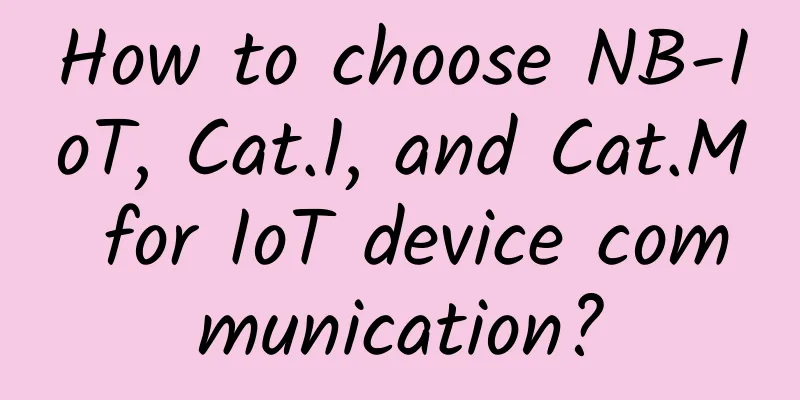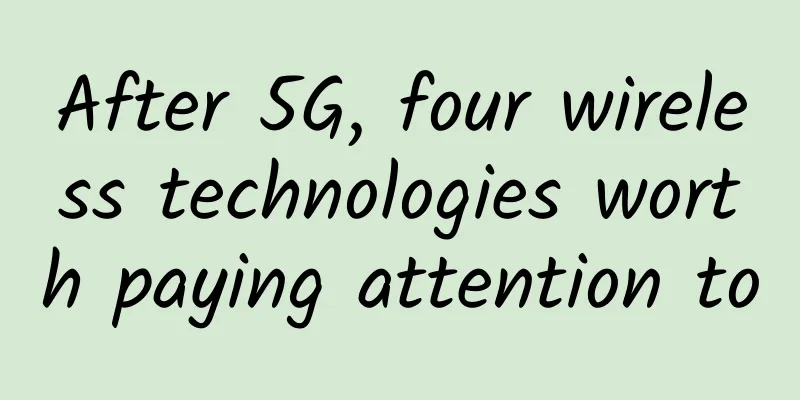How to choose NB-IoT, Cat.1, and Cat.M for IoT device communication?

1. What is NB-IoTNB-IoT (Narrow Band Internet of Things) is an emerging technology in the IoT field, supporting cellular data connections of low-power devices in wide area networks, also known as low-power wide area networks (LPWAN). NB-IoT supports efficient connections of devices with long standby time and high network connection requirements. It is said that the battery life of NB-IoT devices can be increased by at least 10 years, while also providing very comprehensive indoor cellular data connection coverage. The NB-IoT network consists of NB-IoT terminals, NB-IoT base stations, NB-IoT packet core network, IoT connection management platform and industry application servers. NB-IoT has the following four advantages:
2. What is LTE-Cat.1LTE (Long-Term Evolution) is a 4G wireless mobile communication technology that provides high-speed data transmission and low-latency network connections. LTE networks can meet different application requirements through different UE (User Equipment) categories, including LTE Cat.1, LTE Cat.2, LTE Cat.3 and LTE Cat.4. LTE-Cat.1 is a standard for user terminal categories under the 4G communication LTE network, with an uplink peak rate of 5 Mbps and a downlink peak rate of 10 Mbps. It is positioned as a category for the IoT application market. LTE-Cat.1 takes into account speed, power consumption and cost, and with the help of the wide coverage of LTE network, it can quickly form economies of scale! This has led to the strong development momentum of LTE-Cat.1 in 4G modules, with its penetration rate rising all the way, becoming the "newcomer" of low-speed networks in the Internet of Things. 3. What is LTE-MLTE-M, or LTE-Machine-to-Machine, is an IoT technology based on the evolution of LTE. It is deployed on cellular networks and supports a maximum peak rate of 1Mbps for both uplink and downlink, which is a medium-speed IoT technology. Its user equipment can directly access the existing LTE network by supporting 1.4MHz RF and baseband bandwidth. The most critical capabilities of LTE-M are its support for mobility and positioning. Its cost is only 25% of that of Cat1 chips, and its speed is four times higher than that of GPRS. LTE-M has the following four advantages:
4. Application scenario comparisonLTE-Cat.1 can be widely used in industrial gateways, retail cabinets, financial payments, Internet of Vehicles, shared power banks, charging piles, video surveillance and other scenarios. LTE-M supports cellular base station handover and voice functions and is used in wearable devices such as smart bracelets and smart watches, as well as asset tracking, health monitors and alarms. NB-IoT is used to connect a large number of low-power devices, which usually operate in low-power mode for a long time, so that a battery life of several years can be achieved, such as sensors, smart water meters, smart electricity meters, etc. |
<<: How do Apple devices greet each other? - An interesting talk about the Bonjour protocol
>>: Master traffic suppression and storm control to take your business to the next level
Recommend
ZJI: New Hong Kong (Ali/Kwaiwan) E3 high-frequency servers available, 25% off
ZJI is the original well-known WordPress host com...
ThomasHost: $5/month KVM-2GB/50GB/1G port unlimited traffic/6 computer rooms available
I searched and found that the blog shared informa...
Banwagong THE PLAN replenishment season payment starts from $27, available in US CN2 GIA/Japan/Hong Kong, etc.
Bandwagonhost THE PLAN VPS is back in stock. When...
SD-WAN (Part 2)
The previous article "Things about SD-WAN (P...
The Dilemma and Hope of SRv6
Operators have been fighting "pipelining&quo...
When designing and building a distributed storage cluster, how should the cluster network be planned?
@baimmi China UnionPay Co., Ltd. Due to the confi...
Friendhosting New Year Flash Sale: 50% off all VPS, unlimited traffic for 10 data centers starting at $16/year
Friendhosting, a long-established business founde...
CloudCone: Los Angeles CN2 GIA line server 15-100M unlimited traffic starting from $82/month
I have shared information about CloudCone many ti...
SaltyfishTech Germany 9929 package free upgrade, 15% off for quarterly payment, $19/quarter-dual core/1GB/15GB/1.15TB@300Mbps
SaltyfishTech (咸鱼云) recently upgraded the Frankfu...
Building a native cloud to truly realize the benefits of NFV
The goal of network function virtualization in th...
Is connectivity the key to the success of Industry 4.0?
When we look at the manufacturing industry and ho...
Huawei releases smart security distribution business strategy and four new AI products
[Shenzhen, China, March 20, 2020] Today, Huawei&#...
Hosteons: $2/month-1GB/15GB SSD/2TB@10Gbps bandwidth/Salt Lake City data center
A few days ago, I shared the promotion informatio...
Veteran Network Engineer: Talking about Several Typical Deployments and Practices of SD-WAN
A few days ago, I talked with my colleagues about...

![[Black Friday] CloudCone: $8.79/year KVM-1GB/35GB/4TB/Los Angeles Data Center](/upload/images/67cac21deaef7.webp)







